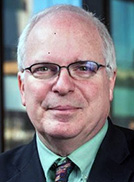A tale of two continents: differences and similarities in HSCT practices in North America and Europe
Treatment guidelines and daily clinical practice often differ between regions in the world. Therefore, it is important to continuously report and compare the current practices in haematopoietic stem cell transplantations (HSCT) across the globe. Only then, a comprehensive study on why certain approaches have evolved can take place to determine if these guidelines can be considered as a global best practice. During his presentation, Dr. Soiffer addressed the differences and similarities in HSCT practices in North America and Europe and linked this to transplantation outcomes in both continents.
At the Transplantation and Cellular Therapy Meeting, held in February 2020, the American Society of Transplantation and Cellular Therapies (ASTCT), the Center for International Blood and Marrow Transplant Research (CIBMTR) and the European Society of Blood and Marrow Transplantation (EBMT) jointly presented a session on bridging the gap in bone marrow transplantation and cellular therapy between North America and Europe. This effort was very well-received and was therefore repeated at the virtual EBMT 2020 meeting. Although daily clinical practice in haematopoietic stem cell transplantation (HSCT) definitely varies between continents and regions across the globe, it is probably safe to say that the clinical practice is more similar than it is different.
First of all, figures illustrate that both in North America and in Europe a steady rise in allogeneic HSCT (allo-HSCT) is reported. In addition to this, a trend is seen in both continents to also transplant older patients more frequently. In the United States (US) and Canada, the median age of recipients for allo-HSCT in the period 2011-2016 was 53, whereas this was 49 years in Europe. Over the past three decades, a significant increase in the number of recipients of older age (above 60 years) was observed.
In both continents, transplants are mostly performed for acute myeloid leukaemia (AML), followed by acute lymphoid leukaemia, myelodysplastic syndromes and non-Hodgkin lymphoma. Within the group of patients with AML, a similar distribution in disease stage can be observed across US/Canada and Europe. For the time period between 2011 and 2016, most patients (60% vs. 62%, respectively) were treated for AML in first complete remission. In the same period, 19% of American/Canadian patients and 18% of European patients were treated for AML in second or subsequent remission while the remaining patients (21% vs. 19%) had induction failure or relapse at HSCT. However, there are some differences in the number of patients that are treated with transplants for haemoglobinopathies. Relatively speaking, more transplants are performed for sickle cell anaemia in North America whereas transplants for thalassemia are more frequent in Europe, although it should be noted that these differences are largely contributable to demographics.
In terms of conditioning, a trend can be observed towards an increased use of reduced intensity conditioning in Europe (44% vs. 38%) while more myeloablative transplants are being performed in North America (62% vs. 57%). With respect to the type of myeloablative conditioning, more total-body irradiation-based conditioning is used in North America (40% vs. 33%), while in Europe a higher frequency of busulfan-based (51% vs. 54%) and treosulfan-based conditioning (1% vs. 7%) was reported. For the donor source, Europe generally performs fewer cord blood transplants (4% in Europe vs. 9% in North America), although the number is decreasing in both continents. This can be attributed to the rise in the use of haplo-identical donors. In Europe, the use of this type of donors has increased from 1,251 in the period 2006-2010, to 4,960 in 2011-2016. Also for North America, an increase was reported from 466 haplo-identical donors to 2,958 in the same time window. For patients whose disease returns, both donor leukocyte infusion after stem cell transplantation (9% vs. 10%) and the use of a second allograft (6% vs. 6%) are used with a similar frequency in North America and Europe.
Nevertheless, despite all the similarities discussed above, there are also some differences between both sides of the Atlantic. For example, a significant difference can be observed in the use of graft-versus-host disease prophylaxis. Tacrolimus is commonly used in the United States and Canada (65% vs. 9% in Europe) whereas cyclosporine is much more common in Europe (79% vs. 20% in US/Canada). In addition, in vivo T-cell depletion with anti-thymocyte globulin or alemtuzumab is used in over half of the transplants performed in Europe (57%), compared to only in a quarter of patients in North America (28%).
Finally, and perhaps most importantly, in terms of transplant outcome there are no differences in non-relapse mortality (21% vs. 21%) and also the data with respect to overall survival (49% vs. 53%) were fairly similar for patients transplanted in North America and Europe, respectively.
Conclusion
To better understand the differences and similarities across different countries and regions in the world, it is critical to continuously report current clinical practice. Only then, we are able to comprehensively study why certain approaches have evolved and determine if these guidelines can be considered as a global best practice. Dr. Soiffer stressed that, as we witnessed the world shutting down by the COVID-19 pandemic, now more than ever, we need every effort to learn from each other across the globe to address public health and other medical issues.
Reference
Soiffer RJ. A tale of two continents: differences and similarities in BMT practices in North America and Europe. Presented at EBMT 2020; Session JS5-1.

